Do I need to completely re-render my house (with lime)?
Discussion
So we have some damp coming through in the corner of one of the downstairs living spaces. The building is solid wall, I guess circa 1900, with lead windows, etc.
As you can see from the pic below it can't be ignored and I need to get to the route of the issue before making good internally. A moisture meter shows saturation, salts are obvious and paint is flaking. It's fair to say there are other areas of the building where I get a high read, but not to this extent.
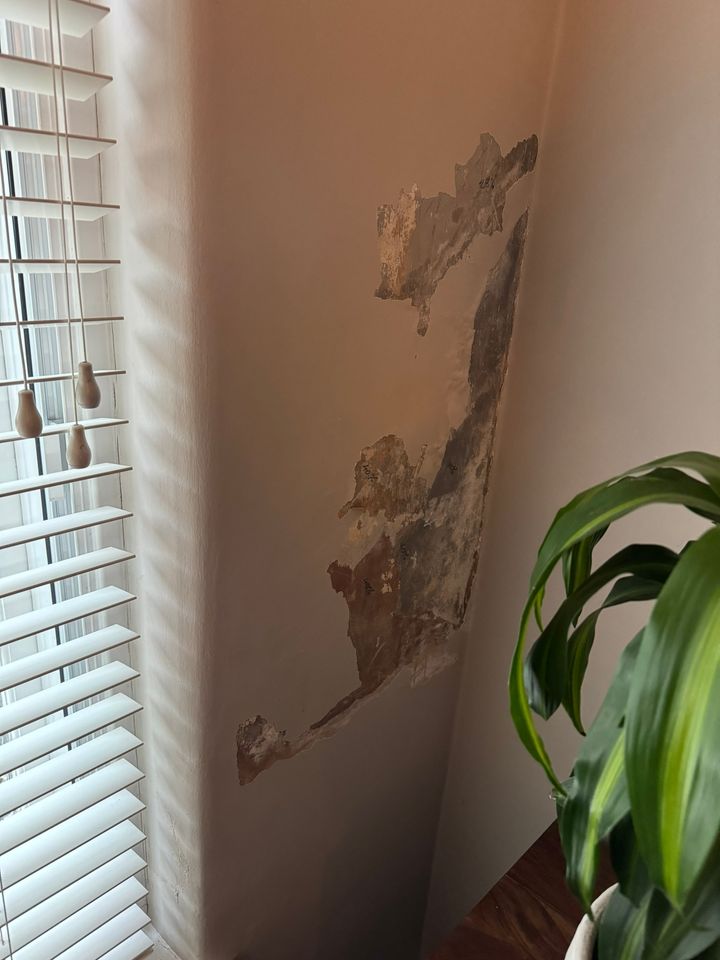
On the exterior of the same area, I have removed some of the paint to get a better look. There are many layers of paint on the front face of the building that have been added over the years. The paint is blown and I guess water can easily get in behind. Obviously, it looks pretty bad following my quick paint removal job.
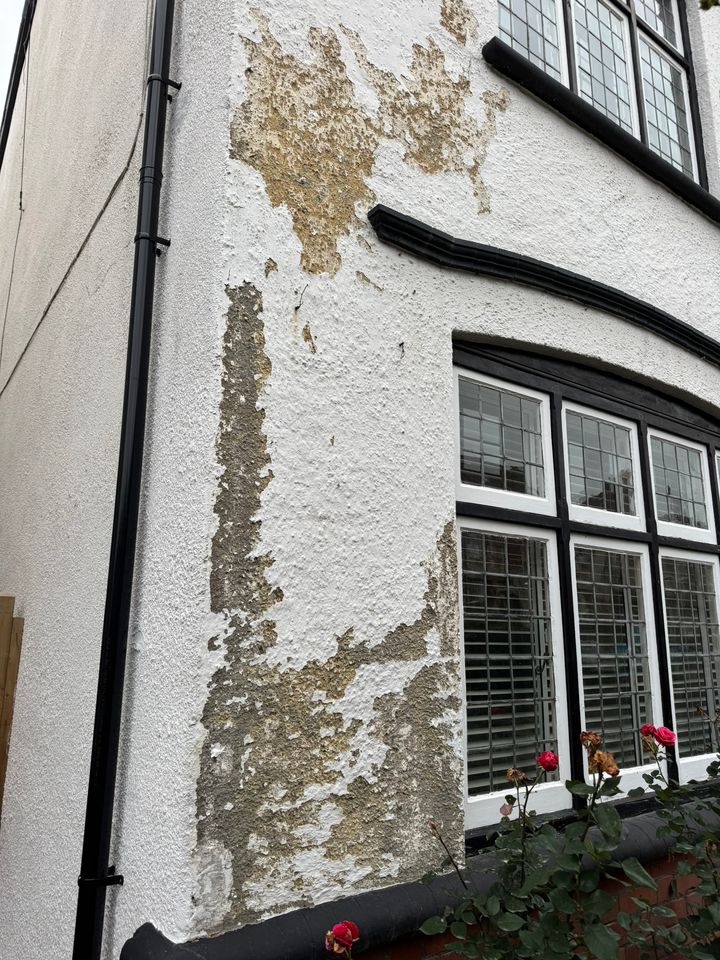
I had always assumed the render was original, but none of the people who have come out to quote for repair have seemed 100% sure. I had a guy out yesterday who does a lot of heritage work and even he scratched his chin and talked generally about it without actually telling me if it was original or not.
So I guess my first question relates to the material that exists on the building - is this cement based?
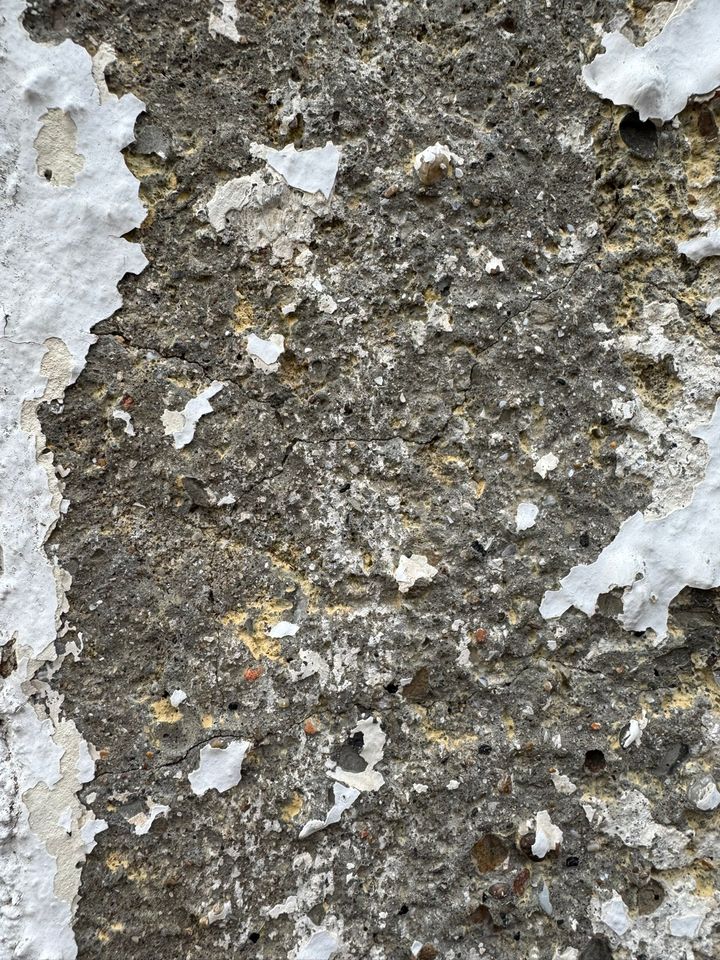
Hairline cracks are plain to see if you zoom in on the images a little. Are these the source of my problem? I have had a roofer suggest I need roof work despite no evidence of water ingress when inspecting the attic, I had a damp proofing firm say I need a chemical damp proof course and interior tanking as they said it was rising damp (I am very sceptical of this). But my gut says penetrating damp due to the cracks in the render is the the most likely culprit...
Everyone of course just wants to sell their services.
So are these cracks causing my damp problem?
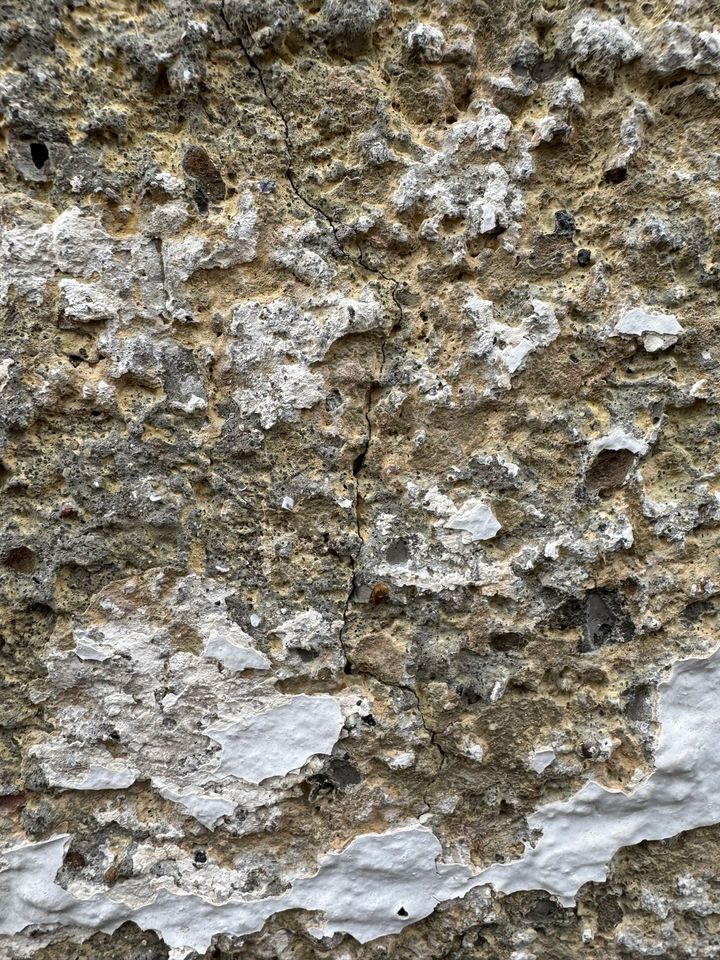
The second question is the one in the title. Do I need to re-render the whole house in lime render or is this totally OTT. The cost is obviously horrendous and I don't see hundreds of semi detached properties around here have the render hacked off in favour of lime. It isn't a grade 1 thatch cottage, but I understand solid walled properties benefit from being able to breath of course. The quotes I've had are not the kind of money I can see myself ever recouping, and that makes it difficult to swallow...
Here are some general exterior shots. Yes, there is cracking in places and of course, we do have an obvious issue in that one corner. But should I just be addressing that area? either filling the cracks or hacking back a few square metres and repairing them with sand and cement? Get scaffs up, remove all the flaking paint and repaint the front face? Or go nuclear and blow my Porsche fund on full lime render around the whole building.
The render does not appear blown as such, it isn't ready to just fall off, just cracked.
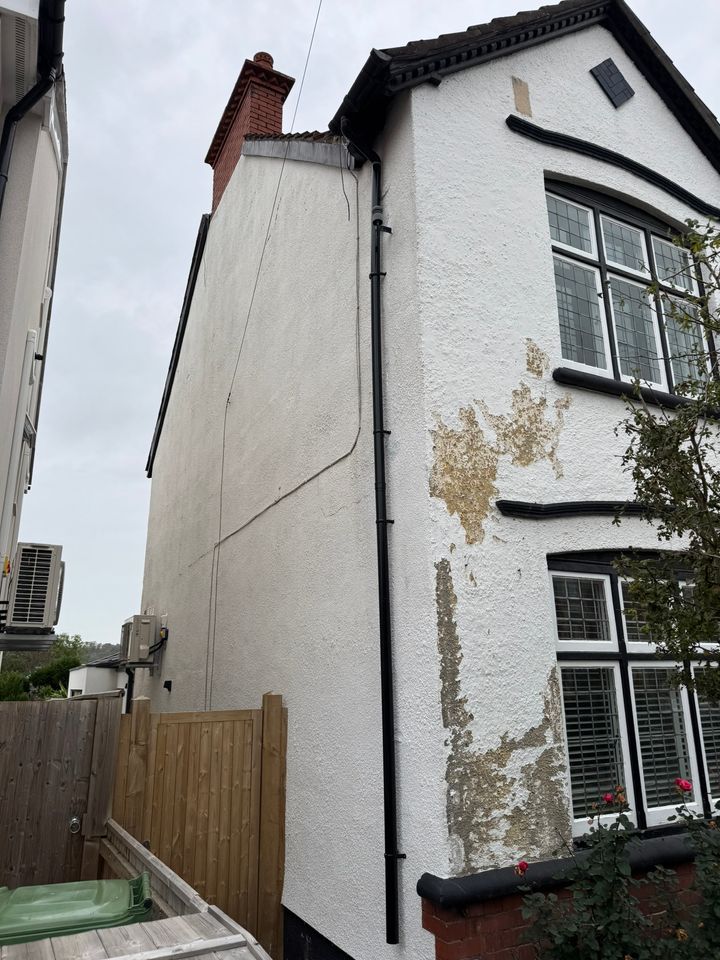
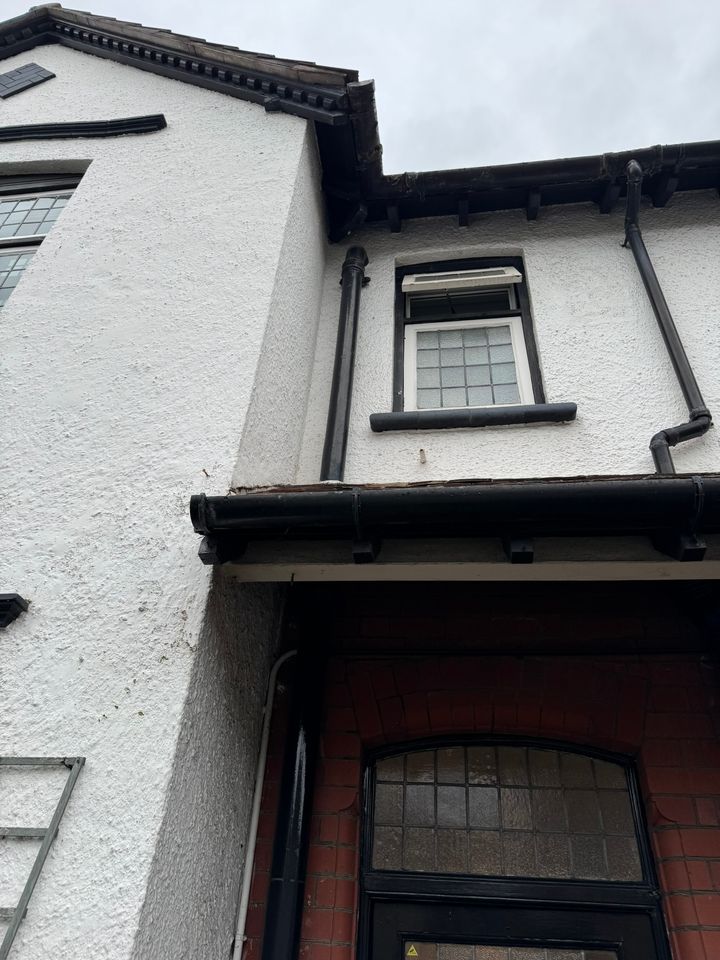
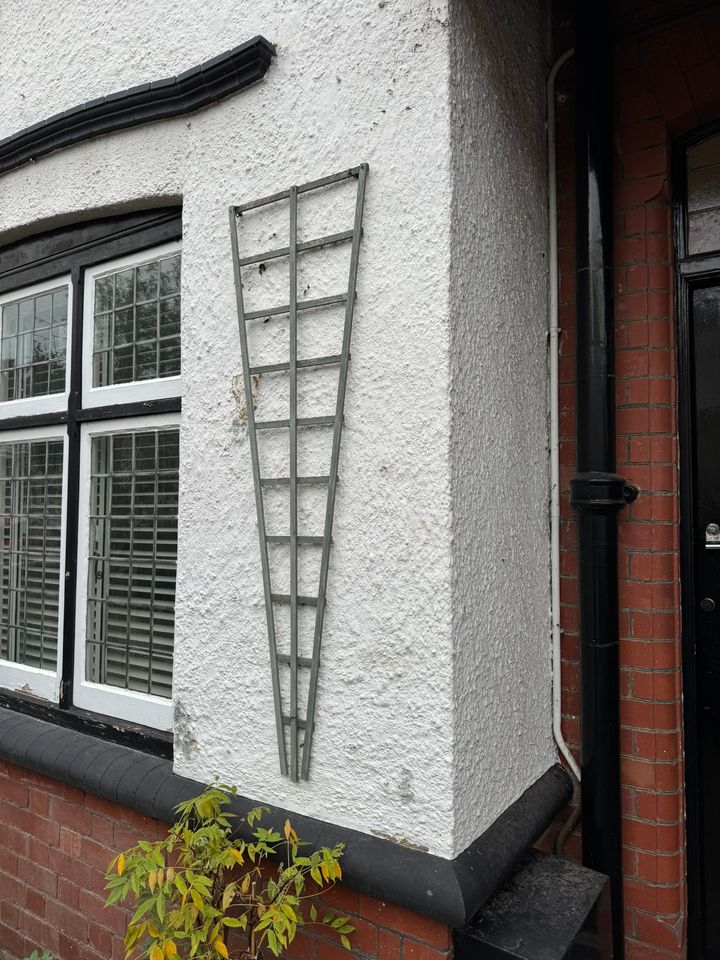
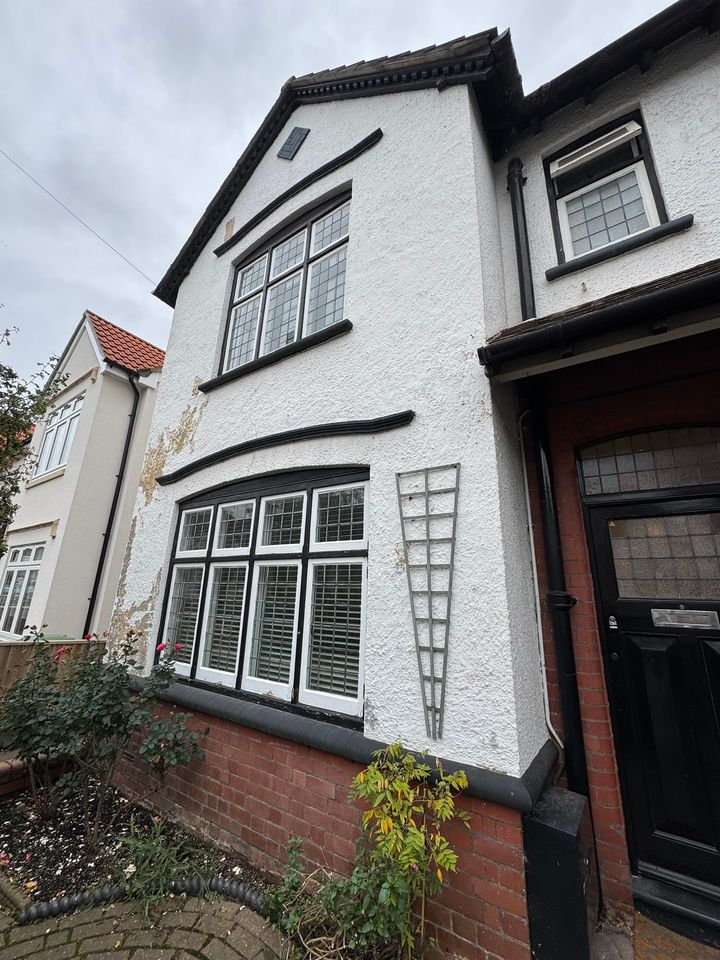
As you can see from the pic below it can't be ignored and I need to get to the route of the issue before making good internally. A moisture meter shows saturation, salts are obvious and paint is flaking. It's fair to say there are other areas of the building where I get a high read, but not to this extent.
On the exterior of the same area, I have removed some of the paint to get a better look. There are many layers of paint on the front face of the building that have been added over the years. The paint is blown and I guess water can easily get in behind. Obviously, it looks pretty bad following my quick paint removal job.
I had always assumed the render was original, but none of the people who have come out to quote for repair have seemed 100% sure. I had a guy out yesterday who does a lot of heritage work and even he scratched his chin and talked generally about it without actually telling me if it was original or not.
So I guess my first question relates to the material that exists on the building - is this cement based?
Hairline cracks are plain to see if you zoom in on the images a little. Are these the source of my problem? I have had a roofer suggest I need roof work despite no evidence of water ingress when inspecting the attic, I had a damp proofing firm say I need a chemical damp proof course and interior tanking as they said it was rising damp (I am very sceptical of this). But my gut says penetrating damp due to the cracks in the render is the the most likely culprit...
Everyone of course just wants to sell their services.
So are these cracks causing my damp problem?
The second question is the one in the title. Do I need to re-render the whole house in lime render or is this totally OTT. The cost is obviously horrendous and I don't see hundreds of semi detached properties around here have the render hacked off in favour of lime. It isn't a grade 1 thatch cottage, but I understand solid walled properties benefit from being able to breath of course. The quotes I've had are not the kind of money I can see myself ever recouping, and that makes it difficult to swallow...
Here are some general exterior shots. Yes, there is cracking in places and of course, we do have an obvious issue in that one corner. But should I just be addressing that area? either filling the cracks or hacking back a few square metres and repairing them with sand and cement? Get scaffs up, remove all the flaking paint and repaint the front face? Or go nuclear and blow my Porsche fund on full lime render around the whole building.
The render does not appear blown as such, it isn't ready to just fall off, just cracked.
Edited by DoubleSix on Sunday 27th October 12:40
Buy a couple of packs of Toupret masonry filler from Amazon (£25) mix as per instructions and fill in with a small plasterers rectangular trowel.
Leave 24 hours then paint with good quality exterior masonry paint such as Sandtex or Snowcem.
An easy DIY job, four or five hours work max.
Leave 24 hours then paint with good quality exterior masonry paint such as Sandtex or Snowcem.
An easy DIY job, four or five hours work max.
I think that the answer to your original question is yes, maybe but I wouldn't rush into spending a lot of money.
It's an odd one given that the house looks OK although it's always very hard to tell from photographs. The damp is quite high for rising damp but maybe possible. What was the paint condition before you hacked it off? The flower bed does not appear to be 150+mm below dpc. If it were my house I'd do the following:
Inspect the roof condition and detailing carefully
Remove the damp plaster and paint the wall with a breathable paint
Repair the render cracks
Install a French drain at the front to drain into a garden soakaway
Paint the house
and of course finish your rwp work maybe connecting the French drain to that gulley depending on your drainage set up.
Re-assess the situation after six months and if progress is being made reassess again after a year.
If you don't fancy painted bricks for a year then you could apply dot and dab plasterboard with gaps top and bottom to let the wall dry out.
It's an odd one given that the house looks OK although it's always very hard to tell from photographs. The damp is quite high for rising damp but maybe possible. What was the paint condition before you hacked it off? The flower bed does not appear to be 150+mm below dpc. If it were my house I'd do the following:
Inspect the roof condition and detailing carefully
Remove the damp plaster and paint the wall with a breathable paint
Repair the render cracks
Install a French drain at the front to drain into a garden soakaway
Paint the house
and of course finish your rwp work maybe connecting the French drain to that gulley depending on your drainage set up.
Re-assess the situation after six months and if progress is being made reassess again after a year.
If you don't fancy painted bricks for a year then you could apply dot and dab plasterboard with gaps top and bottom to let the wall dry out.
The render on your house looks very 'textured'.
Is it different from the rest of the street?
I note the hosue next door has similar but different detailing over the front upstairs window.
Cracks in the render and water behind can be a bit chicken/egg.
Personally I would look at all the details.
Can rain be getting behind the render from around the windows? cills? Roof, gutters, fixings etc etc.
If the cracks in the render are the source, then widening them and filling temporarily with something flexible should alleviate the problem.
If they are a symptom not a cause, it will likely make things worse inside?
My guess for most likely cause, the window is letting water behind the render.
Is it different from the rest of the street?
I note the hosue next door has similar but different detailing over the front upstairs window.
Cracks in the render and water behind can be a bit chicken/egg.
Personally I would look at all the details.
Can rain be getting behind the render from around the windows? cills? Roof, gutters, fixings etc etc.
If the cracks in the render are the source, then widening them and filling temporarily with something flexible should alleviate the problem.
If they are a symptom not a cause, it will likely make things worse inside?
My guess for most likely cause, the window is letting water behind the render.
It looks to me that the house has already had rising damp treatment, the lower extent of the visible damp is a clear horizontal line, I think you'll find the plaster below will be sand and cement.
I would start by hacking off the plaster where damp and see if the wall is actually damp. The salts in the plasterwork will have affected the readings you've taken.
My best guess on the limited information is that it's an old problem, probably caused by the guttering. The heavy salt contamination is causing the plaster to remain damp (taking moisture from the atmosphere). I suspect you'll find the wall behind bone dry despite the recent wet weather, which would exclude the cracks to the render as the cause.
I would start by hacking off the plaster where damp and see if the wall is actually damp. The salts in the plasterwork will have affected the readings you've taken.
My best guess on the limited information is that it's an old problem, probably caused by the guttering. The heavy salt contamination is causing the plaster to remain damp (taking moisture from the atmosphere). I suspect you'll find the wall behind bone dry despite the recent wet weather, which would exclude the cracks to the render as the cause.
wolfracesonic said:
TooLateForAName said:
Check that plinth thing over the window - is that a source of water into the wall?
Render looks poor to me - I'd hack it off and fit external insulation eps.
EWI on a beautiful property like thatRender looks poor to me - I'd hack it off and fit external insulation eps.

EWI has moved on in the last decade or three?
Probably easier to sort the inside with a breathable finish like lime plaster, local repairs to the outside and let wall dry out at least from one side (inside)?
Solid walls need line plaster/render or other moisture permeable finishes if they’re going to have finished.
Damp is almost always water penetration rather than rising damp.
Damp proofing s te is s
te is s te and just a con tbh.
te and just a con tbh.
Solid walls need line plaster/render or other moisture permeable finishes if they’re going to have finished.
Damp is almost always water penetration rather than rising damp.
Damp proofing s
 te is s
te is s te and just a con tbh.
te and just a con tbh.I'd look at a couple of things,
- Fill the cracks.
- Check if there is a dpc being bridged by soil, paving, etc. It should be at least 6" above the ground level.
- Check that those downpipes actually connect into a drainage system of some sort.
I wouldn't be going beserk re-rendering the whole house yet.
- Fill the cracks.
- Check if there is a dpc being bridged by soil, paving, etc. It should be at least 6" above the ground level.
- Check that those downpipes actually connect into a drainage system of some sort.
I wouldn't be going beserk re-rendering the whole house yet.
rossyl said:
Look into Properla masonary creme
I was recommended it on here. It's the best thing on the market.
I have not used it myself.
The front needs repainting.I was recommended it on here. It's the best thing on the market.
I have not used it myself.
I would just get someone to do the Properla wall coating in white.
It forms a breathable but waterproof barrier on the bricks. Perfect for this.
But if the existing render material itself is cement based (can anyone confirm?) and therefore not breathable, how does adding this product to that surface suddenly make it breathable?
Is the product also intended to fill small cracks? I assume not and these would need attending to prior to application.
Is the product also intended to fill small cracks? I assume not and these would need attending to prior to application.
Gassing Station | Homes, Gardens and DIY | Top of Page | What's New | My Stuff



